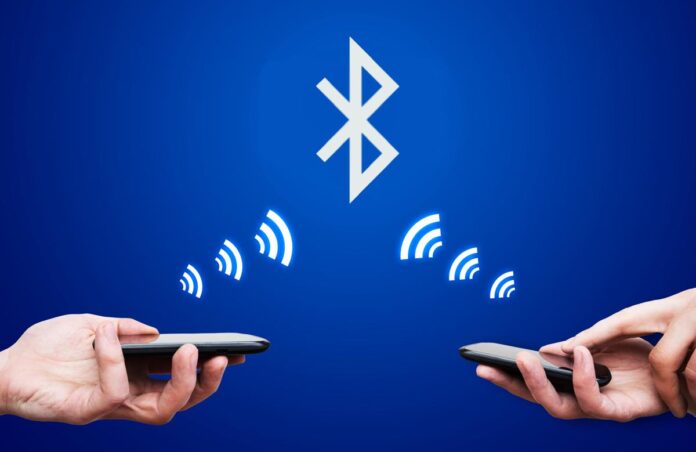Wireless communication technology known as Bluetooth Technology has permeated every aspect of contemporary life. Bluetooth was created in the late 1990s to allow for short-range data transfer between devices without the use of cords. Its increasing adoption across a number of sectors has revolutionised the way we connect to and use our electronics, making our lives easier and more effective. We shall examine the background, features, uses, and future prospects of Bluetooth technology in this essay. A Swedish telecom company named Ericsson developed Bluetooth technology in 1994.
The term “Bluetooth” comes from Harald “Bluetooth” Gormsson, a Danish king who united Denmark and Norway in the tenth century, signifying the unification of communication protocols.The original intention was to develop a wireless headset for cell phones to replace the bulky corded headsets of the day. In 1999, the first Bluetooth version was released, capable of transferring data at speeds of up to 1 Mbps across short distances. Bluetooth creates a personal area network (PAN) using the idea of short-range radio waves. It makes use of the unlicensed 2.4 GHz frequency range and a small, inexpensive transceiver chip that may be integrated into a variety of products. Depending on the Bluetooth device’s class, Bluetooth-enabled devices can interact with one another up to a distance of about 30 feet (10 metres).
Bluetooth technology 5.0 :
In the history of Bluetooth technology, the 2016 release of Bluetooth 5.0 was a crucial turning point. One of its standout characteristics was the fact that it doubled data transfer rates compared to Bluetooth 4.2, attaining speeds of up to 2 Mbps. This improvement made it possible for faster file transfers and better audio streaming, which improved the user experience. The Bluetooth Low Energy (BLE) function, which was a game-changer for Internet of Things (IoT) devices, was also introduced with Bluetooth 5.0. BLE dramatically decreased power usage, prolonging linked devices’ battery life and improving their suitability for extended use. Due to this enhancement, Bluetooth 5.0 is now ideal for use with wearable technology, automated homes, other Internet of Things (IoT) applications and space technology.
Bluetooth 5.1 :
With the release of Bluetooth 5.1 in 2019, location tracking and positioning services improved. It added the Direction Finding feature, which enables devices to precisely pinpoint the direction of a Bluetooth signal. This improvement made it possible for indoor positioning, asset monitoring, and navigation systems to be more precise. Bluetooth technology has uses in a number of fields, including retail, logistics, and healthcare, thanks to direction finding.
Bluetooth 5.2 :
Early in 2020, Bluetooth 5.2 was introduced, with the main goals being to improve security and refine existing functions. Isochronous Channels, which enabled Bluetooth to facilitate the transport of time-sensitive data with low latency and minimal interference, was one of the key enhancements. With this enhancement, Bluetooth became more suited for real-time audio uses, such as wireless earphones and gaming headphones. The LE Power Control function, which improved control over the transmit power of Bluetooth Low Energy devices, is another noteworthy feature. This led to stronger connections, less interference, and greater power effectiveness. Additionally, Bluetooth 5.2 introduces the Enhanced Attribute Protocol (EATT). This optimizes data transfer between devices and lowers overall overhead for quicker, more effective communication.
Bluetooth 5.3 :
The Bluetooth 5.3 update, which was published in the latter half of 2021, added a number of improvements and optimizations. The LC3 codec’s release was one of the major advancements in the area of audio. For high-fidelity audio streaming and voice communication, the LC3 codec provides improved audio quality while using less bandwidth. Additionally, the Elliptic Curve Cryptography (ECC) method, which offers strong security for device pairing and data transfer, was included to Bluetooth 5.3 to address security issues. Bluetooth connections are kept safe and secure from outside threats thanks to ECC. The Periodic Advertising Sync Transfer (PAST) feature, which enables more effective data synchronisation between devices in a Bluetooth network, was also added in Bluetooth 5.3. Applications like asset tracking, where devices are required, benefit from this improvement.
Bluetooth 5.0 vs 5.2
Both Bluetooth 5.0 and Bluetooth 5.2 are important upgrades to the Bluetooth technology, but their approaches to enhancements are different. Higher data transfer rates enabled by Bluetooth 5.0 make it suited for quicker file transfers and high-quality music streaming. It did not, however, provide any particular improvements to audio codecs. The LC3 codec was added to Bluetooth 5.2 in order to improve music quality. The LE Power Control feature and the Enhanced Attribute Protocol (EATT) were both optimised in order to improve power management.
Bluetooth 5.0 vs 5.3
Both Bluetooth 5.0 and Bluetooth 5.3 are substantial upgrades to the Bluetooth technology, but their approaches to enhancements are different. The main goals of Bluetooth 5.0 were to boost data transmission speeds, introduce Bluetooth Low Energy (BLE) for smart IoT applications, and broaden the communication range between devices. Bluetooth 5.3, on the other hand, put more of an emphasis on raising audio quality through the addition of the LC3 codec, boosting security through the use of the ECC algorithm, and improved data synchronisation through the use of the PAST function. With these improvements, Bluetooth 5.3 is better suited for specialised applications that require secure connections, high-fidelity audio streaming, and effective data transfer.
Bluetooth 5.1 vs 5.3
Both Bluetooth 5.1 and Bluetooth 5.3 are substantial upgrades to the Bluetooth technology, but their approaches to enhancements are different. The “Direction Finding” capability was added to Bluetooth 5.1, improving positioning and navigational skills. Although it did not alter the ability to stream audio, it had strong security features.Bluetooth 5.3, on the other hand, put more of an emphasis on raising audio quality through the addition of the LC3 codec, boosting security through the use of the ECC algorithm, and improved data synchronisation through the use of the PAST function. With these improvements, Bluetooth 5.3 is better suited for specialised applications that require secure connections, high-fidelity audio streaming, and effective data transfer.
Conclusion
Since its debut, Bluetooth has advanced significantly, revolutionising the way we communicate with and use technology. Its ubiquitous use across a range of sectors, from entertainment to healthcare and IoT, emphasizes its adaptability and importance in the contemporary world. Bluetooth is anticipated to develop more as technology advances, enhancing our lives and providing smooth connection between gadgets in the ever-expanding digital environment.










